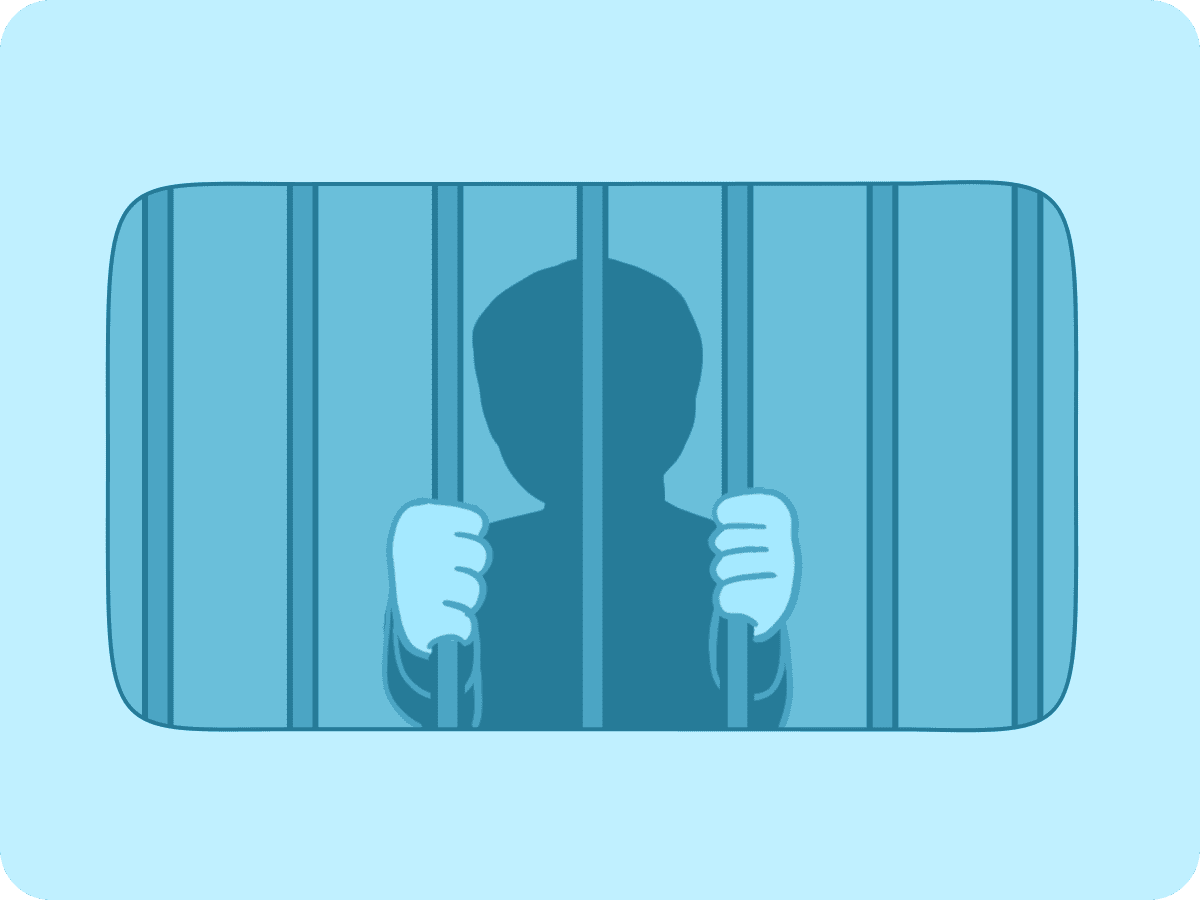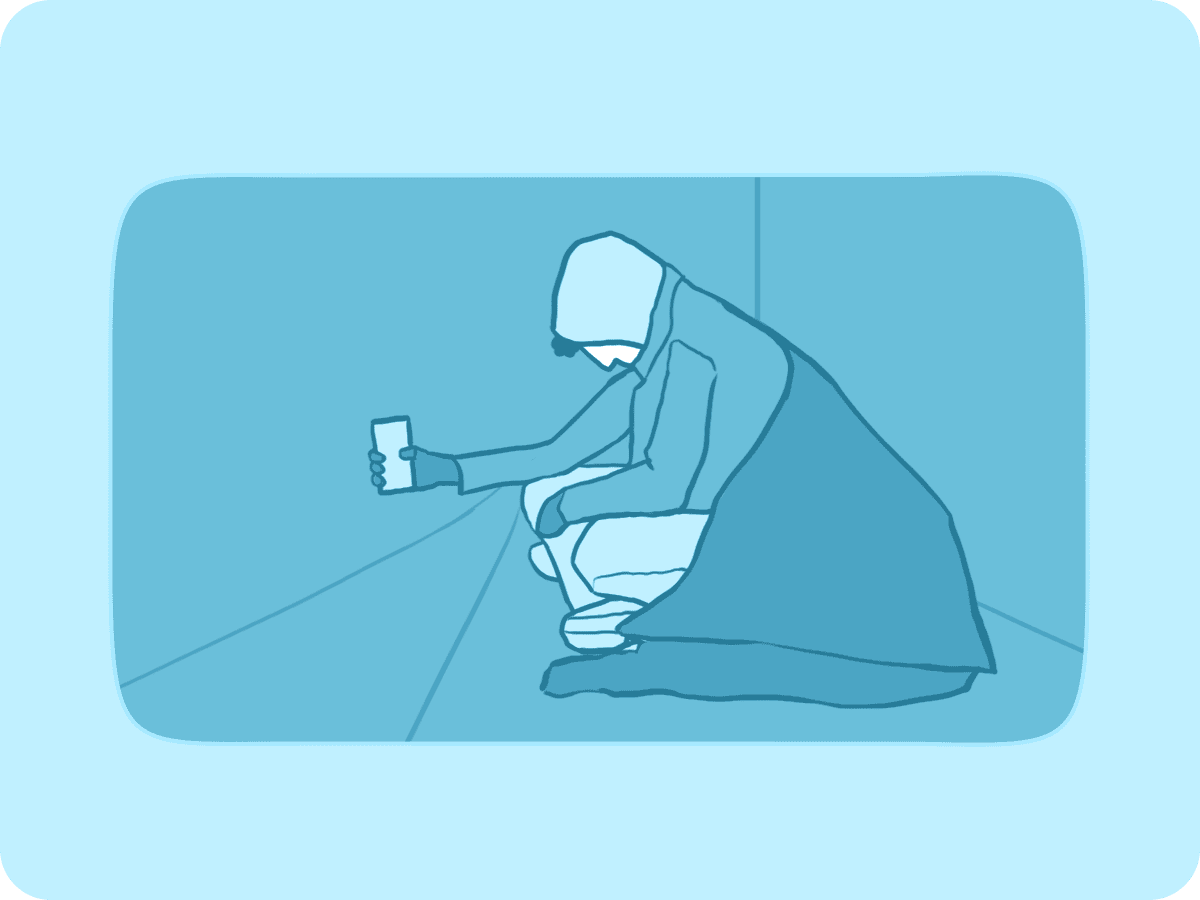The concept of recidivism touches the corners of law, psychology, and society.
Recidivism is the tendency of a convicted criminal to reoffend, a cycle that poses challenges not just to the individual but to the fabric of society itself.
It's a term that bridges individual actions with broader societal patterns, highlighting a critical area for intervention and support. Psychologists are working to understand why it happens, who is more likely to reoffend, how we can prevent it, and what needs to change to give criminals more support when they're released.
Causes of Recidivism

You might wonder why someone who's already faced the challenges of the justice system would choose to walk that rocky path again.
One of the big reasons people find themselves back in trouble is a lack of support when they leave prison. They're released with nowhere to turn, no job to go to, and sometimes not even a home to call their own. This struggle can push them back to the only life they knew before, one that leads back to prison.
Another piece of the puzzle is what experts call habits. Just like how biting your nails can be hard to stop, old habits from a life of crime can be tough to break. And if the people around you are still part of that world, it's even harder.
Now, let's talk about something called stigma. Stigma is the negative label that sticks to someone who's been in prison. It's like walking around with a giant, invisible sign that says, "I made a mistake," and it makes finding a job or building new relationships really hard.
Finally, there's the issue of not having the right skills to fit into the world outside of prison. If the only skills you have are the ones that got you into trouble, it's going to be hard to build a new life on the outside.
So, as you can see, the road to reoffending is often easier than starting over with something new. But understanding these challenges is the first step in helping to break the cycle.
Psychology of Recidivism
Understanding the psychological aspects of recidivism provides insights that are crucial for understanding and addressing this complex issue.
Mental health plays a significant role in the cycle of reoffending. Many individuals who encounter the justice system repeatedly struggle with untreated mental health disorders. In fact, about half of people in jails and prisons in the US struggle with mental illness.
Ten percent of them are serious mental illnesses like schizophrenia. 1 in every 25 prisoners have a psychotic illness and 1 in 10 have major depression.
Even with those high numbers, only 66% of prisoners received mental health care during their incarceration. Without proper care and intervention, these underlying issues can significantly hinder their ability to integrate successfully into society and make positive life choices. Thankfully, when educational programs are available, prisoners are 43% less likely to reoffend.
Substance abuse is another critical factor linked to recidivism. It not only affects decision-making but also contributes to a higher likelihood of returning to criminal behavior. The challenge of overcoming addiction, coupled with the lack of support for substance abuse recovery, can trap individuals in a cycle of reoffending.
Impulse control, or the lack thereof, is also a notable psychological factor. Some individuals may have difficulty controlling their impulses, leading to actions without considering the consequences. This lack of foresight can result in repeated encounters with the justice system.
Understanding these psychological elements is vital in developing effective interventions. By focusing on mental health treatment, providing support for substance abuse issues, and teaching skills for better impulse control, there is an opportunity to reduce recidivism rates.
It emphasizes the importance of addressing the root causes of criminal behavior, rather than merely dealing with the outcomes. This approach not only benefits the individuals involved but also contributes to the overall safety and well-being of society.
Key Statistics

Understanding recidivism becomes clearer when we consider the actual numbers. For example, research often finds that around 60% of individuals released from prison are re-arrested within three years, and 50% are incarcerated again.
This rate is way too high. But as you saw in the previous section, it's actually understandable that with no or limited support, so many would end up reoffending.
The likelihood of reoffending can vary significantly depending on the type of crime. Property crimes, such as theft or burglary, often have recidivism rates as high as 85%, indicating a strong tendency for individuals convicted of these crimes to reoffend.
In contrast, violent crimes see slightly lower recidivism rates, around 65%, suggesting different underlying factors and perhaps different intervention needs.
The first year after release is critical, with a substantial portion of reoffenses occurring during this time. For instance, studies show that ~30% of former inmates commit a new crime or violate parole within the first 12 months of release. That number goes up to 66% in the first three years after release.
This highlights the importance of providing support immediately upon release.
Demographics also influence recidivism rates. Younger individuals, particularly those under 25, have recidivism rates nearing 80%, compared to older adults whose rates drop below 30%.
Additionally, males are often found to have higher recidivism rates than females, though specific numbers can vary across different studies.
These statistics illustrate the multifaceted nature of recidivism and the importance of targeted, evidence-based interventions.
By focusing on the critical periods post-release and addressing the specific needs related to various crimes and demographic factors, efforts to reduce recidivism can become more effective, ultimately leading to safer communities and better outcomes for individuals leaving the criminal justice system.
Impact of Recidivism on Society
The ripple effects of recidivism extend far beyond the individuals who reoffend. It touches families, communities, and the very fabric of society, making its impact a matter of broad concern.
At its core, recidivism strains the justice system and correctional facilities. High rates of reoffending lead to overcrowded prisons and stretched resources, making it harder for these institutions to provide rehabilitation services.
This creates a cycle that's tough to break, where the lack of effective rehabilitation increases the likelihood of reoffending.
The economic toll is also significant. The costs associated with policing, court proceedings, and incarceration are substantial, with public prisons and jails costing $80.7 billion. When individuals reoffend, these costs recur, burdening taxpayers and diverting funds from other critical areas like education and public health.
Communities bear the weight of recidivism too. High rates of reoffending can contribute to increased crime rates in neighborhoods, affecting the quality of life and safety of residents. This can lead to a decline in property values and deter investment, further impacting the community's economic health.
Families of those who reoffend are often overlooked victims. The emotional and financial stress of having a loved one in and out of the justice system can be overwhelming. Children in these families face particular challenges, including social stigma and the potential for intergenerational cycles of criminal behavior.
Addressing recidivism is not just about helping individuals avoid reoffending; it's about healing and strengthening the broader community.
Strategies to Prevent Recidivism

Effective strategies focus on addressing the root causes and providing support for reintegration.
1) Education
Education and job training programs are fundamental. These initiatives equip former inmates with the skills needed for employment, reducing the economic pressures that can lead to reoffending.
2) Health
Mental health and substance abuse treatment are also key. Tailored therapy and support groups address the underlying issues that contribute to criminal behavior. By providing access to these services, both in prison and after release, we can reduce the likelihood of reoffending and support holistic rehabilitation.
3) Community-based Programs
Community-based programs play a vital role. These programs foster connections between former inmates and their communities, offering mentorship, support networks, and resources for reintegration. Feeling a sense of belonging and support can make a significant difference in preventing recidivism.
4) Housing
Housing assistance is another critical element. Secure housing provides a stable base from which individuals can rebuild their lives, reducing the instability that can lead to reoffending.
5) Policy Reform
Laws and policies that support rehabilitation over punishment, such as parole reforms and expungement laws (the sealing of criminal records), can create a better environment for reintegration. By advocating for policies that consider the long-term well-being of former inmates, we can foster a more just and effective justice system.
Rehabilitation Programs
Rehabilitation programs are designed to prepare individuals for a successful return to society, addressing various factors that contribute to recidivism.
Cognitive-behavioral therapy (CBT) programs are among the most effective. CBT helps individuals recognize and change harmful thinking patterns and behaviors. By fostering self-awareness and problem-solving skills, CBT can lead to lasting behavioral changes, reducing the likelihood of reoffending.
Vocational training and education within correctional facilities also play a crucial role. These programs provide inmates with the qualifications and skills necessary for employment post-release.
Substance abuse programs, including detoxification services, counseling, and support groups, address the addiction issues that underlie many criminal behaviors.
Life skills training is another important component. Programs that teach practical skills, such as budgeting, time management, and communication, equip individuals with the tools they need to navigate daily life outside of the correctional system.
The effectiveness of these rehabilitation programs is reflected in reduced recidivism rates among participants. However, the success of these programs depends on their accessibility, quality, and the individual's engagement with the process.
Ongoing support post-release is also crucial to ensure the transition back into society is as smooth as possible.
The Role of Policy and Legislation

Policies and laws have a big impact on how well people can get back into society after being in prison. The right rules can help make this process easier and more successful.
Changing how we punish people for certain crimes is one big step. Instead of sending everyone to jail, we can have other options like community service or programs that help with problems like drug addiction. This helps keep prisons from getting too crowded and lets people stay part of their community.
How we handle parole and probation is also important. These are ways people can leave prison early or avoid going at all if they follow certain rules. If these systems focus more on helping and less on punishing, people are more likely to do well once they're out.
Laws that let some people clear their criminal record after a while can also make a big difference. A criminal record can make it hard to find a job or a place to live. If we can remove or hide these records for people who have changed, it gives them a better chance at a new life.
Programs that help people adjust when they come out of prison are really important, too. These can offer all sorts of help, like finding a job or getting treatment for mental health. Laws that support these programs make sure people have the help they need.
Lastly, it's great when community groups can join in and help. When local organizations like community centers or NGOs work with the government, they can offer more support and make the whole process smoother.
In short, if our laws and policies focus on helping people get back on their feet and become part of the community again, everyone does better. It's about giving people the chance to change and supporting them along the way.
Conclusion
It's clear that reducing the cycle of reoffending is key to creating safer communities and giving people a real chance at a fresh start. This isn't just about keeping people out of jail; it's about helping them build lives they can be proud of.
To make real progress, we need a mix of good programs, supportive policies, and a community that's ready to welcome people back.
Looking ahead, the goal is to keep finding better ways to support people as they leave the justice system. This means staying open to new ideas, learning from what works, and always remembering that behind every statistic is a person looking for a second chance.
By working together—lawmakers, community organizations, and all of us—we can build a future where recidivism is the exception, not the rule.



